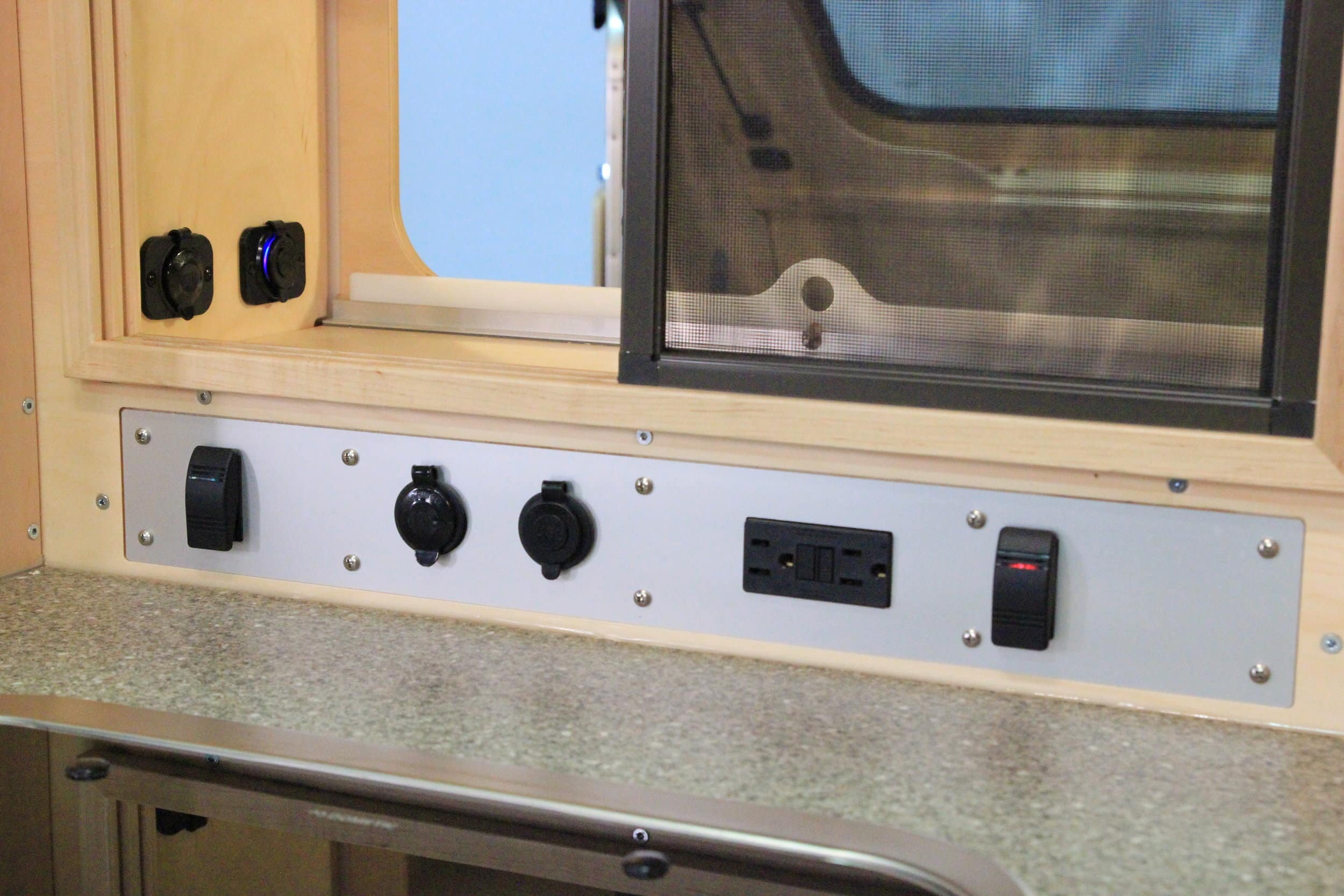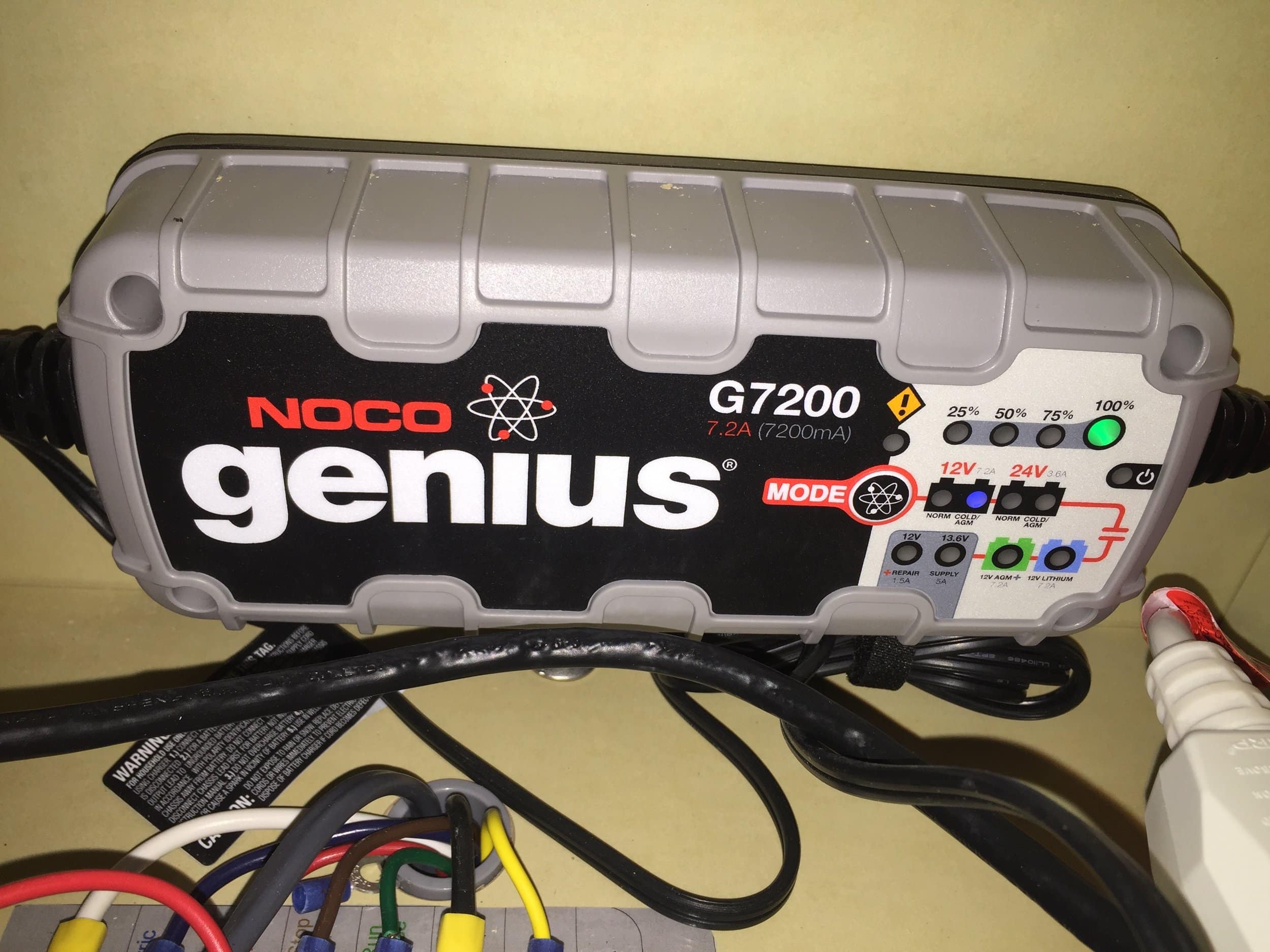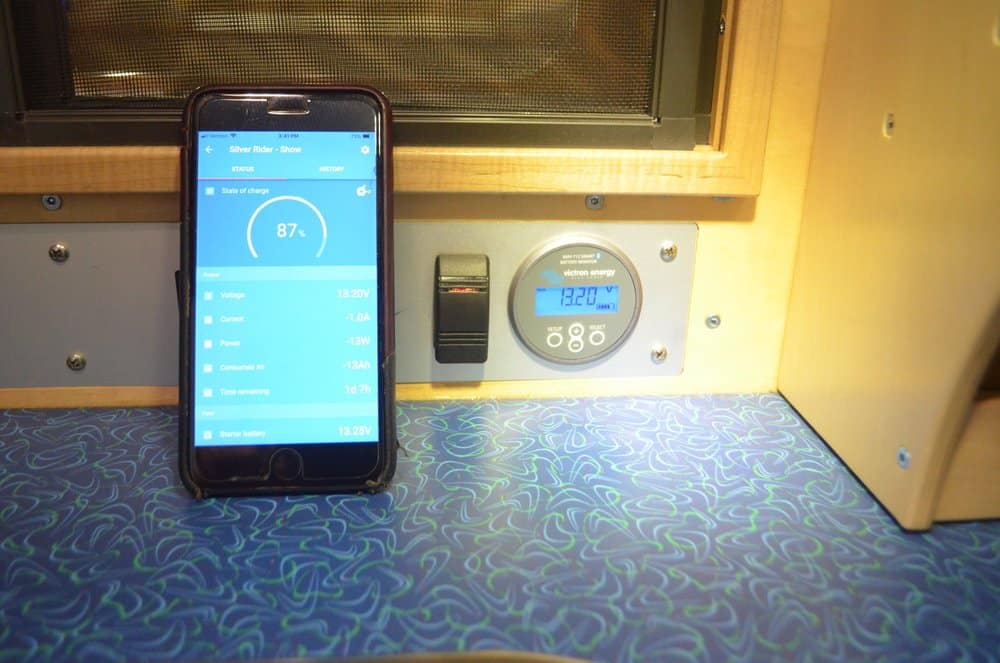As a teardrop manufacturer, we often speak with potential owners who are wondering how these trailers are powered. After all, many folks buy a teardrop camper specifically to take it off the grid and into the wilderness where there are no charging stations or plugins. So, we wrote an article that we hope will provide the answers people are looking for.
Read on to learn about:
- How Teardrop Campers are Powered
- Power Sources
- Battery Options
- Charging Sources
- Teardrop Trailer Power Usage
HOW ARE TEARDROP CAMPERS POWERED?
Although teardrop campers are small in size, their electrical power systems can be designed to deliver capabilities ranging from basic to sophisticated depending on the camping experiences and amenities desired.
The foundation of most teardrop trailer power systems consists of a city power inlet, on-board charger, 12V battery, 12VDC power distribution (fused circuits), and some combination of 12V lighting plus 12VDC, USB, and 120VAC outlets.
A long list of additional amenities, both 12VDC and 120VAC powered can be supported depending on power sources, battery type & capacity, charging capabilities, and 12VDC power usage.
POWER SOURCES
During your teardrop camper adventure, you are going to need to source power at some point. There are multiple options for doing so, each with their own pros and cons.
- Plugging in: Plugging into 120VAC city power at a campsite or another location activates the 120VAC outlets for use as well as the onboard charger to start recharging the 12V battery. Use of 120VAC household appliances, including air conditioning, requires city power.
- Portable and/or affixed solar panels: Portable solar panels that are set up and plugged into the trailer when camping or permanently affixed solar panels (e.g., rooftop) provide another path for recharging your battery when the sun is shining.
- Vehicle connection: A properly designed vehicle-to-trailer connection allows your tow vehicle to help recharge your trailer battery when you’re on the road.
- Gas-powered generator: Although not the most conducive to enjoying the sounds of nature, a gas-powered generator is another way to produce 120VAC power to recharge a battery and run AC appliances when off-grid.

BATTERY OPTIONS
Teardrop campers, similar to larger RVs, boats and other off-grid applications, require batteries that are designed for deep cycle use. AGM batteries (Advanced Glass Mat – lead-acid-based) easily accommodate 50% or more discharge and LiFePO4 (lithium iron phosphate) batteries go even further, allowing for 100% discharge. These two battery types plus capacity options offer flexibility to match most reasonable power demands.
The Vistabule base package includes a 115Ah (amp-hour) AGM battery, which is capable of delivering 3-5 days of power for light to moderate power use scenarios.
Adventurous Vistabule owners have continued to show us good reasons to provide more power. As a result, we introduced a LiFePO4-based power system in 2019 to add even more juice for teardrop camping adventures.
This 100Ah battery delivers 60% more usable energy than the standard AGM battery. This system also includes an upgraded onboard charger (doubles your charge rate) and advanced battery monitor. These components are Bluetooth enabled and integrate with a free smartphone app to provide a slick and intuitive power management set-up.

Teardrop campers, similar to larger RVs, boats and other off-grid applications, require batteries that are designed for deep cycle use.
CHARGING SOURCES
When traveling and camping with a teardrop trailer, keeping your battery charged is a bit like keeping fuel in your vehicle gas tank.. If you’re camping in places that provide access to city power, you essentially have a bottomless tank thanks to the on-board charger.
If your adventures will include remote locations where you can’t plug into the grid, you’ll be relying on some combination of your vehicle when towing or solar panels & sunny skies to ensure your battery is happy and keep everything running.
Traveling with a generator is a more extreme option, which would allow you to produce 120VAC electricity to power your on-board charger.
Plugged In: On-board Charger
When a teardrop manufacturer installs a battery charger, it should be pretty much plug & play other than making sure the correct mode is selected to match the battery type. This ensures the correct charging algorithm is applied to achieve full charge and maximize battery cycle life.
On-board chargers vary in sophistication. Some are simple 12V only chargers suited only for basic lead-acid batteries.
More advanced chargers offer the ability to select battery voltage (12/24) and battery chemistry plus additional modes (e.g., repair). The other notable variable is the Amp rating, which determines how fast it can charge a battery.
Vistabule includes a capable 7.2A charger with the base package and a more advanced 15A charger as part of the LiFePO4 power option. The latter is also Bluetooth enabled to support mobile app configuration and monitoring. Both chargers can be configured for different battery types.

Solar Power
A number of teardrop trailer manufacturers offer options to add solar panels to expand power use scenarios for campers. Whether the panels are permanently affixed to rooftops or part of a portable solution, solar power solutions include the panels and a charge controller.
Solar charge controllers manage the energy collected by the panels and deliver charging current to the trailer battery using a profile that is compatible with the battery type. There are actually two different types of charge controllers (PWM and MPPT). You can learn more about them in this article.
Vistabule offers rooftop and portable solar options. All of our campers come equipped with a port that allows Zamp’s portable panels to plug-n-play. We added rooftop solar panels in 2017 in response to owners’ expanding off-grid camping aspirations.
Custom-designed for seamless integration with the Vistabule’s beautiful lines, these flexible panels are capable of matching typical 12V power needs, including refrigeration for days when the sun is shining.

Portable solar panels that are set up and plugged into the trailer when camping or permanently affixed solar panels (e.g., rooftop) provide another path for recharging your battery when the sun is shining.
Vehicle-to-Trailer Charging
A word of caution related to vehicle to trailer charging also referred to as battery-to-battery (B2B) charging: newer passenger vehicles have started to utilize “smart alternators,” which can be problematic for this B2B scenario.
This is further complicated when using a LiFePO4 battery system in your camper due to different charge voltage requirements and higher potential current flow rates.
Proper wire gauge, fusing and current flow control are all variables to consider. There are new products coming to market designed to address B2B challenges but these still need to be proven out and will add cost and complexity to the overall towing solution.
A key point here is that it will not be a one-size/configuration fits all solution, even for teardrop campers.
Having shared the above caution, many passenger vehicles and most trucks are capable of providing some charging when you’re on the road or even when idling. This requires appropriately-sized positive and ground wires that run from the vehicle battery compartment to the trailer electrical compartment.
A common approach used to accomplish this is by wiring a teardrop trailer with a 7-wire connection between vehicle and trailer, which provides the typical wires for trailer running light plus extra wires that support charging functionality.
TEARDROP TRAILER POWER USAGE
As mentioned above, when a camper is plugged into city power, 120VAC outlets and 12VDC power can be used quite freely. On the 120VAC side, this would include using household appliances, AC, and more.
12VDC powered amenities can also be used more freely since the power being pulled from the battery is being replaced at the same time. The key is to configure an electrical system that considers likely power usage scenarios and incorporates directionally balanced charging capacity.
The real dance of balancing power usage and charging starts when you unplug from the grid and have to manage use/conservation against a backdrop of intermittent and sometimes unpredictable charging opportunities.
A prerequisite to getting the most runway out of all things 12V is understanding how much current each component draws and how much time it will spend with the switch on. Keeping track of this while grabbing any recharge opportunities will maximize your off-grid adventures.
VISTABULE’S APPROACH
Vistabule Teardrops offer you the flexibility to build your dream camper. Our electrical system brings together a carefully selected set of components that provide layers of capability from basic to advanced – primarily plugged into extended off-grid experiences. Download our pricing worksheet and give us a call today to get started with your off-grid adventure.
Related Posts

“Women of Vistabule” Events Expanding Across the Country!
The "Women of Vistabule", a grassroots gathering of solo-travel female Vistabulers, continues to grow---this year seeing two separate events happening simultaneously in the Midwest and Mid Atlantic. With this kind of built-in community, you're never too far away from making new friends and getting outside together. Read on to learn about these great events!

5 Unique Locations to View the 2024 Solar Eclipse
When it comes to camping and road trips, a lot of us have our bucket list destinations: The Grand Canyon, Yosemite, Moab, Badlands, Acadia, etc. No doubt about it, the United States is abundant with natural splendors and breathtaking national parks. But occasionally the star(s), and in this case the moon, align in such a way that a new bucket list destination presents itself.
